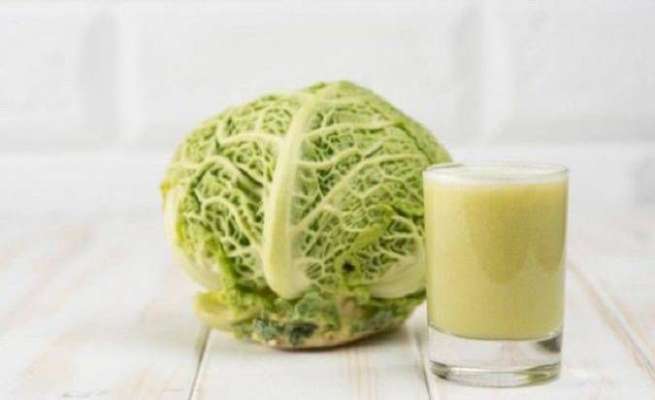
Eating chocolate can help you lose weight. Here’s how
To give up eating chocolate, especially for those who swear by it, is a difficult task to accomplish. At the same time, chocolate-lovers have to fight the urge to consume too much of it to avoid gaining weight. Now, what if we tell you that eating chocolate can...
read more
What Is Kefir? Its Types, Benefits And How To Make It
Kefir, also known as kephir is a fermented drink originated from the northern parts of Caucasus Mountains that divides Asia and Europe. The name kefir originated from the Turkish word 'keif', which means 'good feeling'. The beverage is cultured and fermented, and is...
read more
Some Foods That Helps Slow Aging
Let's face it, no one can stop the human aging process. It's normal and of course inevitable. Our cells is a natural phenomenon that can regenerate 50 times in a lifetime. But obviously, it's not enough to keep as young and healthy. This is the reason why people age...
read more
These 6 benefits of cabbage juice will amaze you!
you must have heard about the carrot or beetroot juice. In any case, do you realize that cabbage juice can assist you with enhancing your wellbeing and resistance? Truly, you have heard us here! On the off chance that you wish to fend off medical issues, you ought to...
read more
TULSI LEAVES REMOVE THE PROBLEM OF ACIDITY
The stomach is the most important part of the body. If the stomach is not correct, then the whole body of the body becomes disturbed. Occasionally there is a problem of disturbances and acidity in digestion due to the wrong eating or wrong lifestyle. Pain in the...
read more
The pros of China Study Diet Plan
It is commonly heard from doctors that once you are diagnosed with diabetes or for that matter hypertension, or heart disease, etc. you may be able to control it with drugs but you have to live with this disease forever. You will never be able to completely cure...
read more
Orange juice, leafy greens may preserve memory in older men
Men who eat leafy greens, dark orange and red vegetables, berries and drink orange juice may be at a lower risk of developing memory loss in older age, according to a study The findings showed that men who ate larger amounts of fruits and vegetables 20 years earlier...
read more
Health meets wellness at this luxurious resort
Nothing can be more beneficial than spending your vacation at a resort that keeps wellness as its key priority. Spread across a sprawling area on the way to Jaipur, Sukaya Wellness Resort’ brings guests closer to the concept of a wellness resort that perfectly blends...
read more
Yoga asanas you can do even at your desk in office
Trying to lead a fit life gets difficult when you spend most of your time in office. But you do not have to compromise with your health and exercise.These simple yoga asanas can be done while at work, and will keep you fit and agile: If you spend time hunched over a...
read more
Stoned-driving on the rise in the US: Study
According to a recent study, due to the recent legalisation of the production and sale of cannabis in some United States, the number of people driving under the influence of cannabis is likely to rise. Getting behind the wheel after cannabis use is on the rise in the...
read moreScientists explore anti-cancer properties of traditional Siddha medicine, Pattu Karuppu
The allopathic system of medicine that treats symptoms of diseases using drugs came into existence in the 19th century. Before that, traditional medicines were common in many Asian countries, including India. A common drawback of allopathic medications is their undesired side effects caused by the adverse reactions of specific drug compounds with parts of our body. This has now rekindled interests among scientists in many traditional forms of medicine which are known to have no side effects. In one such study, researchers from the Manipal Institute of Technology, Manipal, Karnataka, and Anna University, Chennai, have evaluated the anti-cancer properties of Pattu Karuppu, a traditional Siddha medicine.
The Siddha system of medicine has its origin in Tamil Nadu and is similar to Ayurveda where extracts of different plants are used to treat various diseases. Pattu Karuppu is a mercury-based Siddha medicine prepared by the combination of acidic and alkaline substances and is rich in mercuric sulphide (HgS). While mercury is well-known for its curative effects, sulphur neutralises the toxicity of the medicine and makes it more effective.
While Pattu Karuppu is used to treat pain during menstruation (dysmenorrhoea), the absence of menstrual cycle (amenorrhoea) and delirium, its anticancer properties have not yet been explored. In this study, for the first time, the researchers look into the physical and chemical properties of this formulation and evaluate its effects on healthy cells.
The researchers examined a sample of Pattu Karuppu under an electron microscope and found that it contains nanoparticles with an average size of 20-80 nanometers. These come together and form a ‘broccoli-like’ structure. A chemical analysis of the compound showed that it mainly contains carbon and oxygen, with traces of mercury, arsenic and sulphur. “The sample was found to have stable and spherical (porous) particles with size ranges between 20-80 nanometres. The negatively charged, nanosize and relatively high surface area of the particles were used to evaluate its biological action”, say the authors.
The researchers then tested different concentrations of the formulation on cell lines in labs. They observed that the formulation could inhibit the growth of cancerous cells. To determine the ‘safe’ concentrations of Pattu Karuppu, they tested it on zebrafish. They observed that at high concentrations, the zebrafish developed problems with the rate of heartbeat (arrhythmias) and clotting of the blood cells in the heart. The results confirmed that a concentration of 100μg/ml was the safest, a finding that differentiates Pattu Karuppu from other toxic mercurials.
The study promises new hope for cancer patients whose life is bogged down by the side effects of radiation therapy and chemotherapy. As a next step, the authors plan to conduct similar studies on mouse models that could pave the way for effective anticancer drugs.
Asteroid 2010 WC9 to fly by Earth on May 15: Report
Space rock “Asteroid 2010 WC9” will have a near-Earth encounter, about half the lunar distance, on Tuesday, media reports said.The asteroid measures from 60 to 130 meters and moves at a speed of more than 28,000 miles per hour, WeekFacts.com reported late on Saturday.
Asteroid 2010 WC9 was “lost” and then found. The Catalina Sky Survey in Arizona first detected it on November 30, 2010, and astronomers watched it until December 1, when it became too faint to see.
The rock has completed its orbit and now returns to Earth eight years later.
At 11.05 p.m. on Tuesday, Asteroid 2010 WC9 will make its closest approach only 0.53 lunar distances (126.419 miles) from Earth.According to NASA’s Jet Propulsion Laboratory, this is the closest it will come in 300 years, the report said.
People can watch the spectacle on the Internet and the observatories of Northolt Branch in London will broadcast it live.
“We plan to broadcast this asteroid to our Facebook page if the weather forecast remains positive,” Guy Wells of the observatory was quoted as saying.
“The broadcast will last less than 25 minutes, since the asteroid will cross our field of view during this time period. The asteroid will move pretty fast (30 seconds of arc per minute).
“Our display will be updated every five seconds. We, of course, collect astrometric data while this happens, but the movement of the asteroid will occur every five seconds,” said Wells.
Jurassic fossil shows missing link in crocodile family tree
Researchers have found a “missing link” from a 180 million-year-old fossil that sheds light on how some ancient crocodiles evolved into dolphin-like animals.The fossil named Magyarosuchus fitosi in honour of the amateur collector who discovered it, Attila Fitos, was unearthed on a mountain range in north-west Hungary in 1996 and stored in a museum in Budapest.
The species featuring a large portion of backbone is nearly five metres long and had large, pointed teeth for grasping prey. It was one of the largest coastal predators of the Jurassic Period.
It also shares key body features seen in two distinct families of prehistoric crocodiles.
Besides being heavily armoured, the species also had a tail fin, suggesting it is a missing link in the family tree of crocodiles, the researchers noted, in the paper published in the journal PeerJ.
“This fossil provides a unique insight into how crocodiles began evolving into dolphin and killer whale-like forms more than 180 million years ago,” said Mark Young, of the University of Edinburgh’s School of GeoSciences in Britain.
“The presence of both bony armour and a tail fin highlights the remarkable diversity of Jurassic-era crocodiles.”The specimen was identified as a new species based on the discovery of an odd-looking vertebra that formed part of its tail fin.
Some Jurassic-era crocodiles had bony armour on their backs and bellies and limbs adapted for walking on land. Another group had tail fins and flippers but did not have armour, the researchers said.








